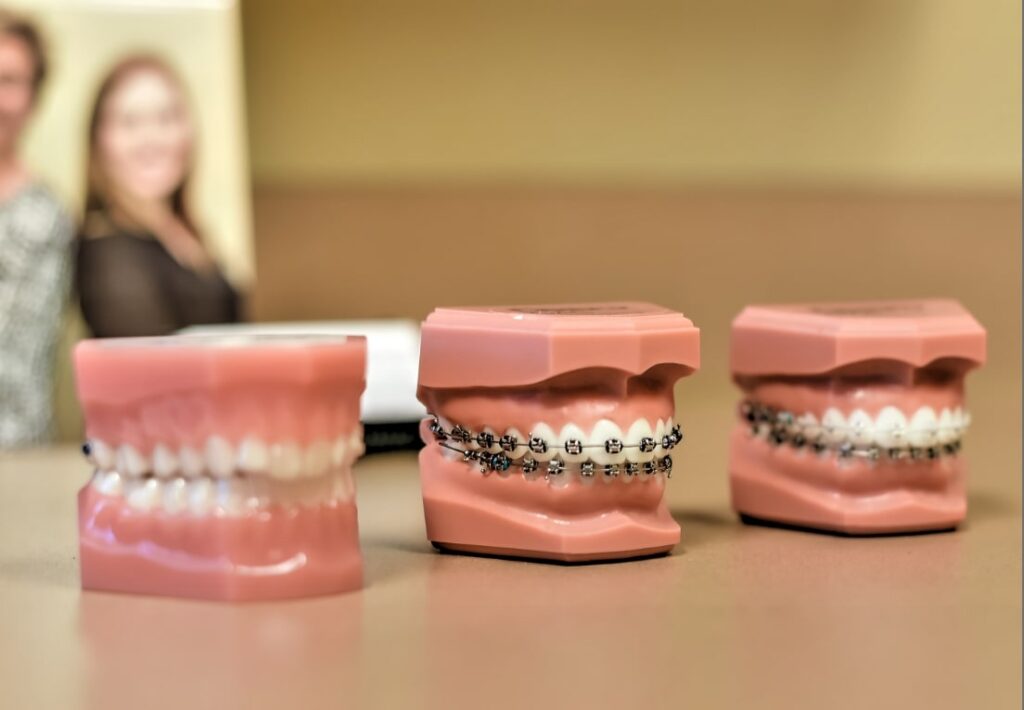Your Overview to Cumming Invisalign: Straightening Teeth with Style and Convenience
Your Overview to Cumming Invisalign: Straightening Teeth with Style and Convenience
Blog Article
Comprehensive Guide to Orthodontics Treatments for Fixing Oral Imbalances
In the world of orthodontics, the trip to achieving a perfectly straightened smile involves a myriad of procedures customized to correct dental misalignments. From traditional braces to unnoticeable aligners and even medical options, the area of orthodontics supplies a variety of services to resolve varying degrees of oral irregularities. Comprehending the details of each treatment, including their devices, benefits, and possible disadvantages, is vital in making educated choices concerning one's orthodontic treatment. As we navigate with the thorough overview to orthodontic procedures for fixing dental imbalances, the intricate information of each technique will certainly unravel, clarifying the path towards a harmonious and functional oral positioning.
Orthodontic Procedures Summary

Along with conventional dental braces and clear aligners, orthodontists might additionally suggest various other treatments like headgear, palatal expanders, or retainers to address certain alignment problems (orthodontics). These procedures are customized to every client's distinct requirements and might include a mix of therapies to attain the wanted outcomes. Regular modifications and tracking are crucial components of orthodontic treatment to make sure progress gets on track and to make any necessary alterations along the road. By going through orthodontic treatments, individuals can not only achieve a straighter grin but also boost their overall dental wellness and feature.
Traditional Dental Braces: Just How They Function
When considering orthodontic treatments for oral imbalances, typical dental braces stick out as a tried and true approach for correcting teeth placing. Conventional dental braces consist of braces, cords, and bands that work with each other to apply continuous pressure on the teeth, progressively moving them into the wanted positioning. The brackets are connected to the teeth utilizing an unique adhesive, and the cables are threaded with the braces. By readjusting the tension of the wires, orthodontists can regulate the direction and force put on each tooth, leading them into appropriate placement over time.
As stress is applied to the teeth through the dental braces, the bone bordering the teeth is improved to support the new tooth placements. Clients will certainly require normal changes at the orthodontist's office to make certain the braces proceed to apply the proper stress for effective teeth movement.
Unseen Aligners: Disadvantages and pros
Invisible aligners supply a convenient and very discreet alternative to conventional braces for correcting oral imbalances. These clear, personalized trays are virtually unnoticeable when put on, making them an attractive alternative for people looking for a much more visually pleasing orthodontic treatment. Among the primary benefits of invisible aligners is their removability, permitting simpler upkeep of oral health contrasted to traditional braces. People can eliminate the aligners before eating or brushing their teeth, decreasing the risk of food obtaining stuck in the home appliance and simplifying the cleaning process.

Surgical Orthodontic Options
Surgical interventions in orthodontics present sensible alternatives for addressing intricate oral imbalances that may not be properly resolved through conventional orthodontic treatments. While invisible aligners and typical dental braces can deal with several orthodontic concerns, particular instances call for surgical treatment to achieve optimal results. Surgical orthodontic alternatives are typically advised for extreme malocclusions, considerable jaw inconsistencies, and instances where the underlying bone framework needs adjustment to achieve proper placement.
One usual medical orthodontic procedure is orthognathic surgical treatment, which includes repositioning the jaws to deal with useful problems such as problem chewing or speaking. This surgical treatment is frequently performed in cooperation with an orthodontist that helps align the teeth prior to and after the treatment. Surgical orthodontics may also entail procedures to reveal affected teeth, remove excess periodontal tissue, or improve the jawbone to create an extra harmonious face profile.
Prior to taking into consideration medical orthodontic alternatives, individuals undergo a thorough examination to determine the need and potential advantages of such treatments. orthodontics. While surgical procedure may seem daunting, it can substantially improve both discover this the function and aesthetics of the smile in cases where standard orthodontic treatments fall short
Retainers and Post-Treatment Treatment

Failing to conform with post-treatment treatment directions can result in regression, where the teeth slowly relocate back towards their original settings. try this website Regular retainer wear, good dental hygiene, and normal oral examinations are important for maintaining the outcomes achieved through orthodontic surgery and guaranteeing the long-term security of the remedied oral alignment.
Conclusion
Finally, orthodontic treatments use different options for correcting oral imbalances. Conventional dental braces make use of metal brackets and cords to move teeth into correct placement. Unseen aligners give a more discreet choice however may not appropriate for all instances. Surgical orthodontic choices are available for extra extreme misalignments. Retainers are typically made use of post-treatment to preserve the new placement. Generally, orthodontic procedures can effectively enhance dental wellness and visual appearance.
As we navigate through the thorough guide to orthodontic treatments for dealing with dental misalignments, the elaborate information of each technique will certainly unfold, dropping light on the path toward a harmonious and practical dental placement. - aligners
One of the most typical orthodontic treatments is the use of dental braces, which consist of metal braces and cords that apply gentle pressure to slowly change teeth right into the preferred placement.When thinking about orthodontic therapies for oral imbalances, traditional braces stand out as a tried and true technique for remedying teeth placing. Additionally, unnoticeable aligners may not be appropriate for discover this complicated orthodontic concerns that call for even more substantial teeth movement, as they are normally recommended for mild to moderate cases. Retainers are customized orthodontic gadgets made to hold teeth in their dealt with placements after the conclusion of orthodontic therapy.
Report this page